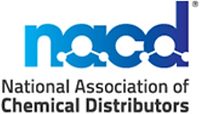NACD Comments on EPA Risk Management Program Final Rule

ARLINGTON, VA – The National Association of Chemical Distributors (NACD) announced that it welcomes U.S. Environmental Protection Agency (EPA) Administrator Andrew Wheeler’s signing of the Risk Management Program (RMP) Reconsideration Final Rule. The changes include rescinding requirements in the 2017 RMP Amendments Final Rule including third-party audits, use of safer technology and alternatives analyses, incident investigation and root cause analyses, and many of the public information sharing requirements. The final rule also modifies the emergency coordination and exercise provisions and extends compliance deadlines.
NACD Vice President of Regulatory Affairs Jennifer Gibson said, “NACD shares EPA’s goals of preventing chemical accidents and improving preparedness and supports the approach the agency has taken in the Risk Management Program Reconsideration Final Rule. Throughout the process dating back to the drafting of the 2017 rule, the association has repeatedly stated that the third-party audit, root cause investigation, and safer technology alternatives analysis requirements would impose significant new costs on industry without identifying or quantifying the safety benefits to be achieved.”
Gibson continued, “Owners and operators of NACD member companies have a personal stake in the safety and security of their employees, companies and communities. They demonstrate this through their commitment to NACD Responsible Distribution®, participation in Local Emergency Planning Committees, and careful compliance with numerous environmental, safety, and security regulations at the federal, state, and local levels. Therefore, the top priority of EPA should not be expansion of regulations such as RMP for those already in compliance, but rather a dedicated effort to make sure all chemical facilities are aware of and have a full understanding of their regulatory obligations.”
Gibson concluded, “NACD commends EPA for taking our recommended changes to the 2017 rule seriously and for instead pursuing a commonsense approach that improves facility safety without hamstringing businesses with burdensome requirements that have no proven benefit.”
Looking for a reprint of this article?
From high-res PDFs to custom plaques, order your copy today!





-(1).jpg?height=200&t=1668413861&width=200)


